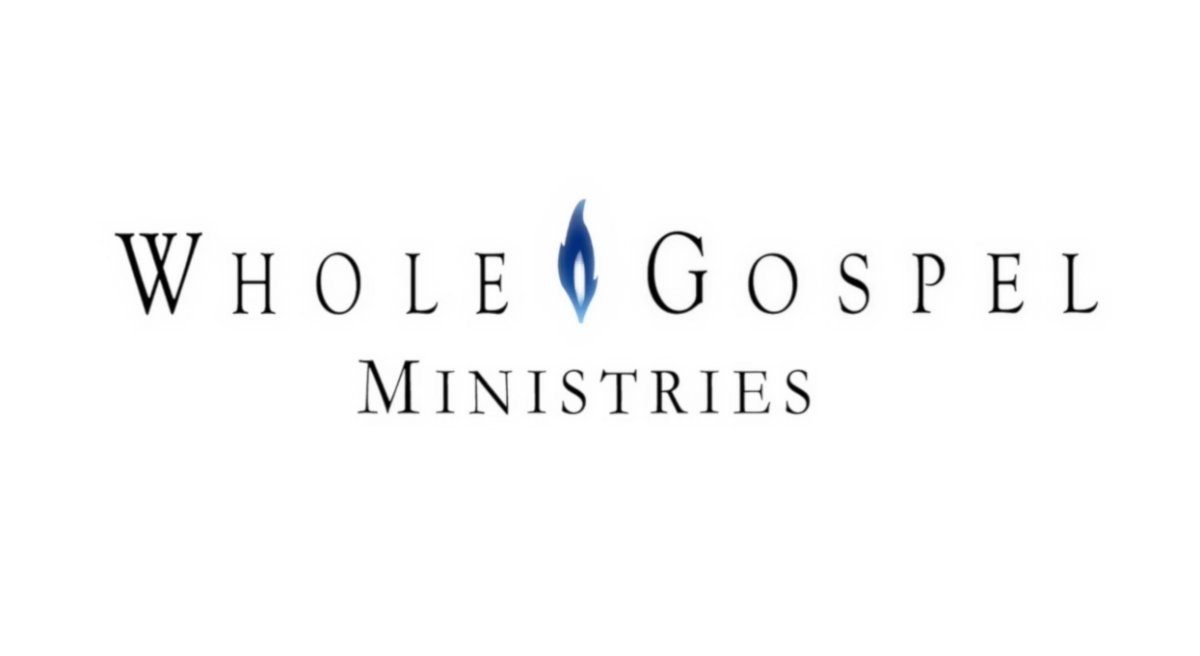
FRIDAY MORNING MANNA
June 12, 2015
Nathaniel Fajardo
Biblical Numerology: NUMBER THREE – Part XII
THE THREE PERSONS OF THE GODHEAD (Continued)
We repeat the first paragraph of our May 15, 2015 issue, Part VIII: “The recent Bull of Indiction of the Extraordinary Jubilee of Mercy, Misericordiae Vultus, declared a Holy Year by Pope Francis will open December 8, 2015 on “the Solemnity of the Immaculate Conception” and concludes a year later “with the liturgical Solemnity of Christ the King on Nov, 20, 2016.” Of the latter date, it says further, “On that day as we seal the Holy Door, we shall be filled, above all, with a sense of gratitude and thanksgiving to the Most Holy Trinity for having granted us an extraordinary time of grace”. . . .“The granting of indulgences as a traditional theme of the Jubilee year is expressed in section No. 22. (For fuller details, see NEWS.VA Official Vatican Network.
In the role of the revived papacy in end-time prophecy as given in Revelation 13, at least three things stand out in this Bull of Indiction of the Extraordinary Jubilee of Mercy, or Misericordiae Vultus issued by Pope Francis. They are:
(1) The opening, then sealing of this “door or mercy” or “this extraordinary time of grace.”
(2) The period of time during which this Marian mercy is extended is called an Extraordinary Jubilee Year. This is a Roman Church Jubilee. What about the Biblical Jubilee? When was it declared by God and for what purpose?
(3) The granting of Indulgences.
First, on papal Bulls. See Wikipedia on List of Papal Bulls. Just an insight on what these Bulls were issued for, which began in year 1059 establishing cardinal-bishops as the sole electors of the pope; issuer, pope Nicholas II.
Nov. 4, 1184, Lucius II issued Ad Abolendum condemning heresy, and list some punishments (though stops short of death).
In March 25, 1199, pope Innocent II issue Vergentis senium, addressed to city of Viterbo, announcing that heresy would be considered, in terms of punishment, the same as treason.
In 1233, Gregory IX issued Licet ad capiendos, marking the Inquisition of the Church.
On July 1253, Innocent IV issued Ad exstirpanda (“For the elimination”), authorizing use of torture for eliciting confessions from heretics during the Inquisition and executing relapsed heretics by burning them alive.
In 1291 Pope Nicholas IV Prae Cunctis, authorizing the Franciscans to start the Inquisition in Bosnia.
On Nov. 18, 1302, Boniface VIII issues Unam Sanctam (“The One Holy”), declaring that there is no salvation outside the Church (Extra Ecclesiam nulla salus), and that the Church must remain united.
In 1336 Benedict XII issued Benedictus Deus (“On the beatific vision of God”) declaring that the saved see Heaven (and thus, God) before Judgment Day.
March 1, 1420 Martin V issued Omnium Plasmatoris Domini, calling of a crusade against followers of Jan Huss, John Wycliffe, and other heretics, initiating the Hussite Wars.
On Jan. 18, 1460 Pius II issued Execrabilis{“Exercrable”), prohibiting appealing a papal judgment to a future general council.
April 19, 1470 pope Paul II issues Ineffabilis providentia (“Ineffable Providence’) declaring that a Jubilee would take place every 25 years.
Nov. 1, 1478, Sixtus IV issues Exigit Sincerae devotionis, authorizing Ferdinand and Isabella to appoint Inquisitors which created the Spanish Inquisition.
Oct. 18, 1481 Sixtus IV issues bull appointing Tomas de Torquemada inquisitor-general of Avignon, Valencia, and Catalonia.
December 19, 1513 Leo X issuesApostolici Regiminis concerning the immortality of the soul.
June 15, 1520 Leo X issues Exsurge Domine(“Arise, O Lord”) demanding that Marin Luther retract 41 of his 95 theses, as well as other specified errors, within 60 days of its publication in neighboring regions of Saxony.
In 1523-34, Clement VII issues Intra Arcana, allowing use of violence for evangelizing.
In 1854 Pius IX issued Ineffabilis Deus defining the dogma of the Immaculate Conception, etc.
Let us consider these in the order given above:
The Doors that are Open and Shut
The “opening,” then “sealing” of the Holy Door” of the Misericordiae Vultus instantly brings up the issue of obedience, first, of the estimated 2.2 billion members of the Roman Catholic Church worldwide. According to H.P. Biainci, Catholic Review, in article, “Thirty Million Former Catholics: What Can We Learn”? wrote: “Statistics for the American Catholic Church are truly sobering.
According to the Pew Research Center, one-third of all adults raised Catholic no longer describe themselves as Catholics, and 10 percent of all Americans are former Catholics. What can we learn from 30 million former Catholics? Most ex-Catholics leave the faith for 2 reasons: dissatisfaction with church leaders or the church’s hard-line on sexual morality [Really? Sex abuse of both sexes has been going on for centuries largely due to the unbiblical and unnatural “celibacy” vow, and the opportunity offered by the Confessional, etc].”
What about the rest of the Christian world—the Protestants and Evangelicals— who have been long in harmony with the Church of Rome—simply by the authority of the latter, whether they admit it or not—in venerating Sunday, the first day of the week as “the sabbath” giving it a new name as “the Lord’s Day,” and/or the “Christian Sabbath.”
Most aver that the seventh-day Sabbath is merely “Jewish” or is only a “Seventh-day Adventist doctrine,” etc. But there were no Jews, Seventh-day Baptists, or Seventh-day Adventists when God created the physical earth in six literal days, man on the sixth day, and rested from His completed work on the seventh day, setting it apart from all the rest by proclaiming it as part of the divine fiat: “For in six days the Lord made the heaven and the earth, the sea, and all that in them is, and rested the seventh day: wherefore the Lord blessed the Sabbath day and hallowed [sanctified, set apart, made holy] it.” Exo. 20: 11. Again, when Christ completed His prophesied work as the promised Messiah in three and-a-half years, 27 A.D. to 31 A.D.,
He died at Calvary at 3 PM of Friday, the “preparation day, and likewise “rested in the tomb according to the commandment” as did all His true disciples. See Luke 23: 46-56, etc. He resurrected early on the first day of the week but His glorious resurrection on the first day of the week, our Sunday, did not render it the Sabbath day which the Creator declared is the Memorial Day He instituted 4,000 years before His death and resurrection.
Indeed, “a three-fold cord is not easily broken.” Eccl. 4: 12. Three distinct things the Maker/ Creator did for and on the seventh day of creation week which He did not do for the first six days preceding the seventh: Herested in it, blessed, and hallowed it —a literal day being 24 hours. God set apart the seventh day as the Memorial Day of creation week, (which evolution vainly attempts to confuse and make of no effect), and His exclusive creative power, thus, exclusive right to be worshipped alone by all creatures; giving it its proper name, the Sabbath day.
All the rest of the days of the week were only called the “first day,” “second day,” “third day,” etc. So where did we get the names of the day of our week? Dies Solis, Sun’s day, Sunday; Dies Lunae, Moon’s day, Monday; Dies Martis, Mar’s day, Tuesday; Dies Mercurii, Mercury’s day, Wednesday; Dies Jovis, Jupiter;s day, Thursday; Dies Veneris, Venus’ day, Friday’ Dies Saturni, Saturn’s day, Saturday. We can see at a glance the origin of our English names for the first, second, and seventh days; the remaining four days are named from Tiu, Woden, Thor, and Frigga, northern deities equivalent to Mars, Mercury, Jupiter, and Venus, in classical Mythology.
The Roman Church admits, yea, declares to the churches and to the world that it was she, not Christ, who changed the seventh-day Sabbath memorial of creation to Sunday, the first working day of the week. Christian Edwardson says:
“And yet we find the Christian world generally keeping it [including those who have left the Roman Catholic Church and joined other Protestant or Evangelical denominations]. Who made this change, when it is not recorded in the Bible? When, how, and why was it made? Who dared to lay hands on Jehovah’s law, and change His Holy Sabbath, without any warrant from Scripture?
“All Protestant [and Evangelical] denominations disclaim any part in this crime. But the Roman Catholic Church boasts of having made this change, and even points to it as the evidence of its authority to act in Christ’s stead upon earth. We shall therefore ask her two pointed questions: 1. When did you change the Sabbath? 2. Why did you do it? Here are her answers:
‘The first proposition needs little proof. The Catholic Church for over a thousand years before the existence of a Protestant, by virtue of her Divine mission changed the day from Saturday to Sunday.’ –‘The Christian Sabbath,’ p. 29. Baltimore, Md.: ‘Catholic Mirror,’ Sept. 23, 1893.
‘Ques. – Which is the Sabbath day? Ans. – Saturday is the Sabbath day.
‘Ques. – Why do we observe Sunday instead of Saturday?
‘Ans. – We observe Sunday instead of Saturday because the Catholic Church, in the Council of Laodicea (A.D. 336), transferred the solemnity from Saturday to Sunday. . . .
‘The [Roman] Church substituted Sunday for Saturday by the plenitude of that divine power which Jesus Christ bestowed upon her.’ – ‘The Convert’s Catechism of Christian Doctrine,’ Rev. Peter Geiermann, C. SS. R., p. 50. St Louis, Mo.: 1934. (This work received the ‘apostolic blessing’ of Pope Pius X, Jan. 25, 1910.)
‘The Church. . . . took the pagan Sunday and made it the Christian Sunday. . . .And thus the pagan Sunday, dedicated to Balder, became the Christian Sunday, sacred to Jesus.’ – ‘Catholic World,’ (New York). March, 1894, p. 809. Above quoted in Facts of Faith, (Revised ed), Southern Publishing Asso;. Nashville, TN, 1943, p. 69.
How about the rest of the non-Christian world religions such as Islam, Judaism, Buddhism, Hinduism, etc.? What about those classified as” non-believers,” including the rapidly increasing numbers in America who say they do not belong to any religious affiliation? How about the agnostics and atheists? What will happen to all who do not, for whatever reason, enter this “door of mercy” which opens December 8, 2015 and ends November 20, 2016 next year? How will the papacy view and classify all those who do not “enter” the literal doors of the Vatican and other appointed churches worldwide?
Will they be also classified as heretics?
(To be continued next week)

